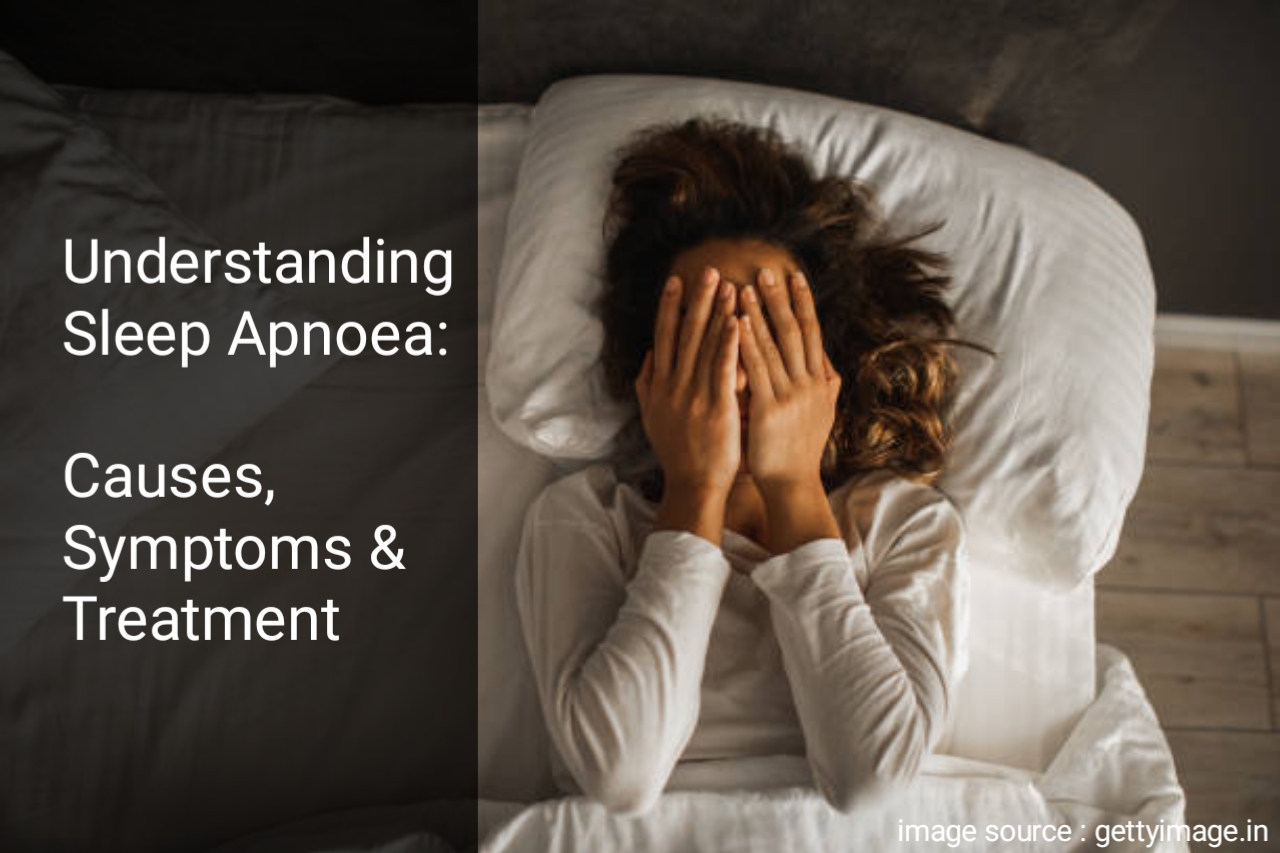Sleep apnoea, often spelled as “sleep apnea” in American English and “sleep apnoea” in British English, is a prevalent sleep disorder that affects millions of people worldwide. This condition disrupts normal breathing patterns during sleep, leading to pauses in breathing or shallow breaths that can occur repeatedly throughout the night. These interruptions in breathing can have serious consequences on one’s health and well-being if left untreated.
Causes:
Sleep apnoea has various causes, primarily categorized into three main types:
Obstructive Sleep Apnoea (OSA): This is the most common form of sleep apnoea, occurring when the muscles at the back of the throat relax excessively during sleep, causing the airway to become partially or fully blocked.
Central Sleep Apnoea (CSA): In CSA, the brain fails to send proper signals to the muscles responsible for breathing, leading to pauses in breathing during sleep. Unlike OSA, there’s no physical obstruction in the airway.
Complex/Mixed Sleep Apnoea: This type involves a combination of both obstructive and central sleep apnoea.
Several factors can increase the risk of developing sleep apnoea, including obesity, age, gender (men are more likely to have sleep apnoea than women), family history, smoking, alcohol consumption, and anatomical features like a thick neck or narrow airway.
Symptoms:
Recognizing the symptoms of sleep apnoea is crucial for early diagnosis and treatment. Common signs and symptoms of sleep apnoea include:
Loud and persistent snoring
Episodes of breathing cessation during sleep, often witnessed by a sleeping partner
Gasping for air or choking during sleep
Excessive daytime sleepiness
Morning headaches
Difficulty concentrating
Irritability and mood swings
Frequent nighttime urination
Dry mouth or sore throat upon waking
It’s essential to consult a healthcare professional if you or someone you know experiences these symptoms, as untreated sleep apnoea can lead to serious health complications.
Treatment:
Effective treatment for sleep apnoea depends on the severity and type of the condition. Treatment options may include:
Continuous Positive Airway Pressure (CPAP) Therapy: CPAP therapy involves wearing a mask connected to a machine that delivers a constant stream of air to keep the airway open during sleep.
Oral Appliances: These devices are designed to keep the throat open by positioning the jaw forward or holding the tongue in place.
Lifestyle Modifications: Losing weight, avoiding alcohol and sedatives before bedtime, quitting smoking, and maintaining good sleep hygiene practices can help alleviate symptoms.
Surgery: In some cases, surgical procedures may be recommended to address anatomical issues contributing to airway obstruction.
Conclusion:
Sleep apnoea is a serious sleep disorder that requires prompt diagnosis and appropriate treatment. By understanding its causes, recognizing the symptoms, and seeking medical help when needed, individuals can effectively manage sleep apnoea and improve their quality of life. If you suspect you or a loved one may have sleep apnoea, don’t hesitate to reach out to a healthcare provider for evaluation and guidance.”
